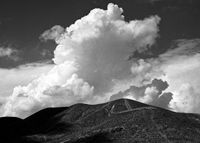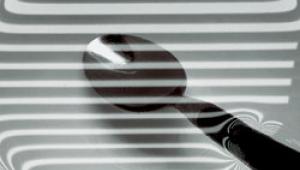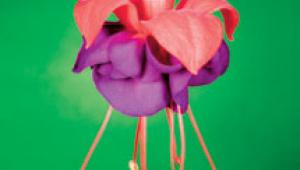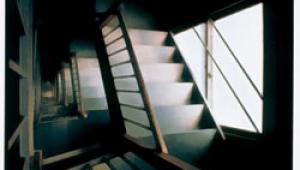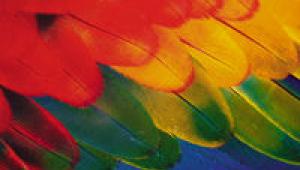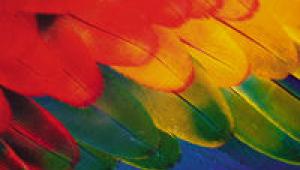Photo Filters Page 2
| Filter Factors Colored filters transmit light of their own color and absorb light of their complementary color. Since they do absorb some of the light from the scene, you must increase exposure when using colored filters or your photos will be underexposed (too dark). How much should you increase exposure when using a given filter? To a degree, a camera's built-in through-the-lens meter will take care of it for you. But often a meter's light-sensitive cells and the film being used will have different color sensitivities. For more precise results, meter without the filter, then increase the exposure per the filter factor. The filter factor is just a number indicating how many times you should increase exposure to properly reproduce neutral (colorless) subjects—those whose tones should be unaffected by the filter. Table A is a list of filter factors for commonly used colored filters. It's generally easier to open the lens a certain number of stops (or fractions thereof) than to give "2.5X" more exposure, so Table B shows the value of each filter factor in terms of f-stops. If you're using more than one filter over the lens at a time, determine the exposure correction for the combination by multiplying the filter factors of the filters, or by adding the f-stop increases. For example, if you're using a No. 25 red filter (filter factor 8, f-stop increase 3) plus a polarizer (filter factor 2.5, f-stop increase 11/3), multiply the filter factors (8 X 2.5 = 20) or add the f-stop increases (3 + 11/3 = 41/3 stops). For sharpness' sake (and to avoid vignetting), don't use more than two filters at a time. If you have a filter that's not listed in the table and you want to learn its filter factor, here's a good way to determine it. Get a packet of Kodak Gray Cards (distributed by Tiffen) from your local camera shop (a packet containing one 4x5-inch and two 8x10-inch cards lists for $9.95, it's catalog number is E 152 7795). With no filter over the lens, meter one of the gray cards and expose a frame of it accordingly. Put the filter over the lens and expose additional frames of the gray card, increasing exposure in 1/2-stop increments, starting with the original metered exposure and ending with 3 or 4 additional stops of exposure. Once the film has been processed, take the unfiltered frame and find the filtered frame that matches it in density. The number of stops of increased exposure given to the matching frame is the amount of correction to use for future shooting with that filter. For really precise exposures when using colored filters, Zone VI Modified Meters (available through Calumet, 890 Supreme Dr., Bensenville, IL 60106; 800/225-8638) are color-corrected spot meters that "see" colors the same way black-and-white film does, so you can take meter readings right through the filter and get accurate exposures. (Calumet can also modify several existing spot meter models to do this.) Color Balance Daylight (a mixture of yellow light from the sun and blue light from the sky) is bluer than tungsten or photoflood light. Thus, if you use a film balanced for indoor light outdoors, your pictures will be too blue unless you use the appropriate filter to compensate for the difference in lighting color. Conversely, if you shoot daylight-balanced film indoors, your photos will look too orange unless you use the appropriate filter. Table C shows you which corrective filters to use when shooting with various film and lighting combinations. The miracle of corrective filtration aside, it's better to work with a film balanced for the light source being used, for three reasons. First, the color will be better if you do, even if you use corrective filtration with the mismatched film. Second, the filters block some of the light, making focusing more difficult and requiring increased exposure. This is particularly a disadvantage when using daylight film in dim indoor lighting. Third, for maximum image quality, it's always better to shoot without anything between subject and the camera lens. No film is balanced for fluorescent lighting, which emits a strange light spectrum. By using a special fluorescent-light filter (offered by several manufacturers in both daylight-film and tungsten-film versions) over the camera lens, you can greatly improve color photographs made by fluorescent light, but don't expect perfect color rendition. If you must shoot under fluorescent lighting, it's best to use one of the color-print films designed to reproduce things "as the human eye sees them," such as the Fujicolor line and the newer Kodak and Agfa print films. For those who are interested, the reason a filter can't fully correct for fluorescent light is that various portions of the spectrum are virtually absent from the fluorescent lamp's output, and a colored filter can't add color; it can only take it away. A red filter doesn't add red to a scene; it subtracts (absorbs) all the other colors. If a fluorescent-light tube emits virtually no red light, a red filter can't add it; it can only reduce the amount of green and blue. |
- Log in or register to post comments






